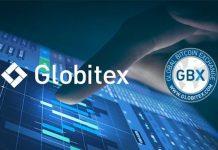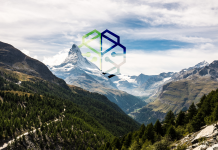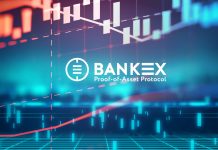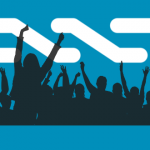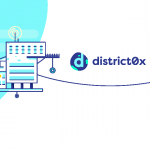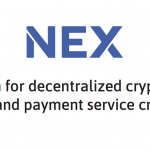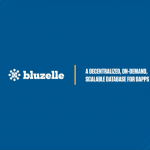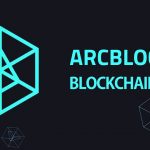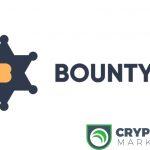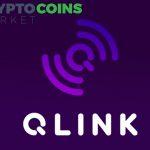The core development team behind advanced blockchain platform Nxt that builds on and extends the basic functionality of the first wave of pioneering crypto-currencies has announced “broadening access” to the blockchain space with a new ‘child-chain’ platform, Ardor. It will enable users to create their own blockchain technology with Ardor child chains based on technologies built on the Nxt 1.0 crypto currency and the blockchain.
The developers have acted on industry feedback that the Nxt Foundation gathered in their talks in addition to examining the core problems of any blockchain, which is scalability and blockchain bloat. It is claimed that the new architecture addresses and solves these issues.
As the first Blockchain 2.0 platform, the community has continually improved Nxt and now looks forward to release Ardor for companies, organizations, and of course, users. Nxt community research has led to Ardor, touted as the only platform that currently uses child chains and incorporates all of Nxt’s latest blockchain innovations.
What is Ardor?
Ardor’s decentralized asset exchange feature will enable the users to trade any assets on any of the child chains, as well as between them. Decentralized voting and governance systems will also be built in, to allow secure and anonymous voting on the Blockchain.
Ardor’s uses goes beyond financial exchanges. It creates a blockchain platform that is open to everyone - from single users to fintech start-ups and governments. The developers assert that anyone can “create their own child chain” and interact with the entire blockchain ecosystem. The upshot is that anyone, anywhere, will be able to create blockchain services with relative ease.
Like Nxt, Ardor will also support smart, or phased transactions, where several conditions can be set before a transaction can be executed. In order to ensure the high speed and security of the network, all the child chains are connected to the original and already powerful Nxt 1.0 Blockchain.
One of the main innovations of Ardor is the idea to separate the transactions that don’t affect security from those that do. The first group will then be moved entirely onto the many child chains. That will allow the original Nxt Blockchain to serve as a supplier of secure, high-speed transactions for all the practical solutions implemented on the 2.0 child chains, ensuring their high scalability.
Blockchain-as-a-Service.Ever since the launch of Ethereum in July 2015, Blockchain-as-a-Service (BaaS) has become a major trend in the fintech industry. It’s becoming increasingly clear that Blockchain could greatly enhance the security, reliability and efficiency of a huge number of systems, at the same time cutting their costs.
A number of Blockchain projects have appeared on the scene, that are trying to improve such use cases as cloud storage, cloud computation, governance, and even the Web itself. The realization that it may be easier to just provide the tools for people and companies to build their own Blockchain solutions, gave birth to several BaaS initiatives, such as Ethereum, Lisk, and now Ardor.
Ardor’s Key Features
Manageable Blockchain Size
Ardor is touted as “solving scalability problems” by separating transactions and data that do not affect security from those that do. Specifically, Ardor moves all of those that do not affect security onto child chains.
The Ardor team will set about creating the first child chain to house many Nxt 1.0 tools as well as future tools in the pipeline. This small size also comes with short transaction times, “so processes need only a fraction of Bitcoin’s time to execute functions” it is claimed.
A Decentralized Asset Exchange
Building off the Nxt Asset Exchange, a peer-to-peer exchange built directly into the Nxt software, Ardor enables individuals to trade assets on any child chain for any of the other child chain tokens. As such this lets child chains interact with each other and opens up numerous opportunities for business and innovation. It will also bring cross-chain asset trading, which is a long-requested feature within the Nxt ecosystem.
Decentralized Voting and Governance Systems
Ardor will be at the core of decentralized consensus making of the future. Secure and anonymous voting will be an available feature on all child chains - as it is on the Nxt platform.
Phased Transactions
In terms of phased transactions, users can and will be able set ‘multiple conditions’ prior to a transaction being executed, such as a minimum number of votes and a set amount of time.
As with Nxt, Ardor will use Smart Transactions. Users need only submit the parameters for the transaction and ID of the transaction type they wish to use. Add to that the transaction process is also completely decentralized.
Ardor Main Chain vs. Child chain
Main Chain
The Ardor Main Chain will be where all Ardor tokens (ARDR) will reside. It will serve as the system that secures all child chains and processes their transactions. While some transactions will be possible on the Main Chain, such as exchanging ARDR from one account to the other, most features will be unavailable on the chain itself in order to improve its performance and reduce blockchain bloat. Because it is 100% Proof-of-Stake, no additional processing will be needed for mining as no new tokens will be created.
Child Chain
A child chain, which is a ‘light’ blockchain that can be customized to a certain extent, is designed to allow easy self-deploy for your own blockchain. Nxt claim that users will “not need to worry” about security, as that part is now handled by the main blockchain. This is the chief innovation of Ardor.
Creating an Ardor child chain allows you to utilize the advanced blockchain technology of Nxt for your business, organization, group, or independent project. Users of any child chain will be able to hold and trade assets that exist on Ardor with all other child chains throughout the platform.
All child chain transaction fees will use the token native to that child chain. Users of a child chain will not need to have any ARDR in order to participate. A designated account on the child chain, such as the creating account, will collect transaction fees in the native child chain token then pay the processing fees of the child chain in ARDR to the Main Chain.
While setup after launch will need to be done manually, the creation of a child chain will be simplified down the road after the launch of Ardor. Still, the process will be much simpler than setting up one’s own blockchain.
How could Ardor be used?
So you could be a data storage business and get Ardor to design you a blockchain for record keeping that is totally customizable. Or even set up your own cryptocurrency through ardor for internal or public use for transaction of assets.
Ardor (ARDR)Token
Overview:
Current coin Value: $0.118531
Market Cap: $118,412,409
Total Supply: 998,999,495 ARDR
Circulating Supply: 998,999,495 ARDR
ARDR asset tokens have been issued that represent the real Ardor tokens that you will get when Ardor launches. These ARDR asset tokens released on October 12, 2016. Starting on July 14, Nxt started taking hourly snapshots of the wallets of every holder of the currency.
On October 12, each user’s total amount of Nxt was averaged, and they received that amount of Ardor tokens. This will happen simultaneously with the launch of Nxt 1.9, which is already in development. Ardor tokens are planned to be freely tradeable up until the launch of the actual Ardor system later down the line.
Exchanges
• HitBTC
• NXT client asset exchange
Wallets
To store ARDR use only official Nxt wallets from https://nxt.org/ download or online wallet: https://wallet.mynxt.info.
In Q3 the Ardor wallet will be released, Ardor tokens will show up in it automatically with the same passphrase if you store in one of the Nxt wallets from the links above.
[currencyprice currency1=”ardr” currency2=”usd,eur,btc”]
[currencygraph currency1=”ardr” currency2=”usd”]



